Tom's Guide Verdict
The Vizio V-Series is a solid TV for the price, if you can live with low brightness and poor HDR performance.
Pros
- +
Affordable
- +
Low lag time
- +
Lots of adjustments possible
Cons
- -
Low brightness
- -
Poor HDR performance
- -
Slightly slow interface
Why you can trust Tom's Guide
Price: $529.99
Screen size: 55 inches
Resolution: 3840 x 2160
HDR: Dolby Vision, HDR10+, HDR10, HLG
Refresh rate: 60Hz
Ports: 3 HDMI 2.1 (1 ARC)
Audio: 2 Channel [x 10 watt]
Smart TV software: Vizio SmartCast
Size: 49.06 x 28.47 x 3.40 inches [w/o stand]
Weight: 30.14 pounds [w/o stand]
Vizio is known as a value TV brand, and the Vizio V-Series is its least expensive line of 4K TVs. As you'll see in this Vizio V-Series (2021 Model) review, the latest model adds a bit more value. In addition to 4K resolution, the TV sports Dolby Vision and HDR10+, as well as support for the latest gaming tech, such as variable refresh rate (VRR) and auto low-latency mode (ALLM). This year Vizio even added a voice remote to use your voice to control the TV. All that in a 55-inch TV that usually costs under $500.
To achieve that price with those features, something has to give. In this case it’s brightness, color and interface performance. Whether those downsides turn you off depends on what you value. If price and features are a priority for you, the V-Series is a solid TV — and a good value.
Vizio V-Series (2021 Model): Price and availability
The latest V-Series was released in August 2021. Vizio is calling this model the 2022 version, even though it was released in 2021.
The 55-inch V555-J01 that we reviewed lists for $529.99, but can be found for less than that. As of this writing, it is selling for $429.99 on Amazon and Walmart.
The V-Series comes in a wide array of sizes — from 43 inches to 75 inches — so you’ll find one that fits your space.
- 43 inches (Model V435-J01) — $339.99
- 50 inches (Model V505-J09) — $391.00
- 55 inches (Model V555-J01) — $429.99
- 58 inches (Model V585-J01) — $529.99
- 65 inches (Model V655-J09) — $599.99
- 70 inches (Model V705-J03) — $699.99
- 75 inches (Model V756-J03) — $899.99
The specs are similar across the entire lineup, with only the speaker wattage varying, so we expect each TV to have the same strengths and weaknesses as the 55-inch model we tested.
Vizio V-Series (2021 Model) review: Design
As the cheapest 4K TV that Vizio offers, the V-Series features little in the way of design innovation. The 49.06 x 28.47 x 3.40-inch unit is encased in dark gray plastic and has a half-inch bezel around the entire screen. In other words, it looks like pretty much every LCD TV from the past few years.
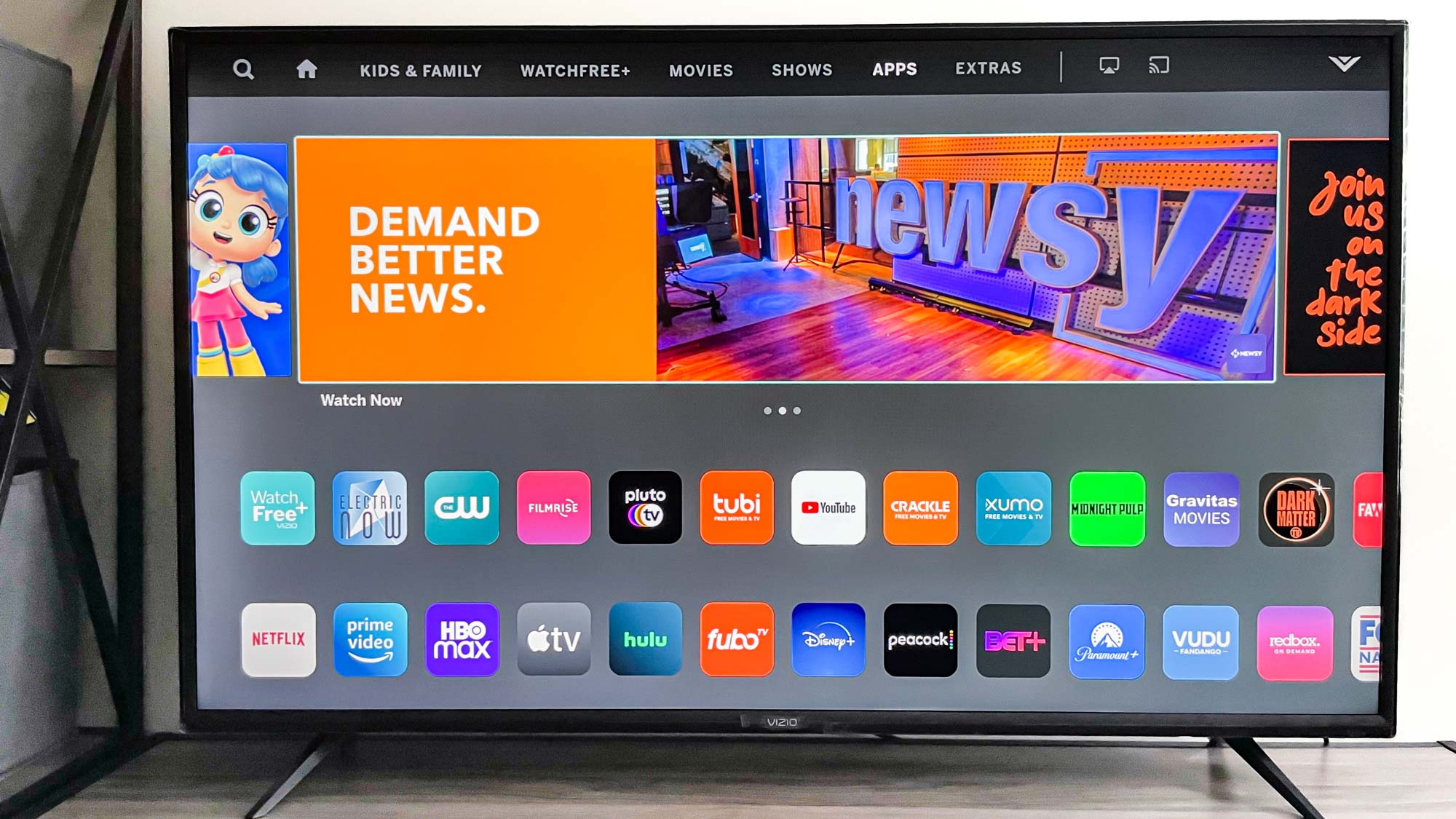
The V-Series comes with standard boomerang style plastic feet or you can use a VESA compliant mount. The 55-inch model in our review works with any 300mm x 200mm bracket, which makes it a good match for any of the best TV mounts.
Vizio V-Series (2021 Model) review: Ports
On the right side, you’ll find three HDMI 2.1 ports, with one that supports audio-return channel (ARC). The ports are conveniently located and easy to access. More expensive TVs will usually offer four HDMI ports, but three will probably be enough.
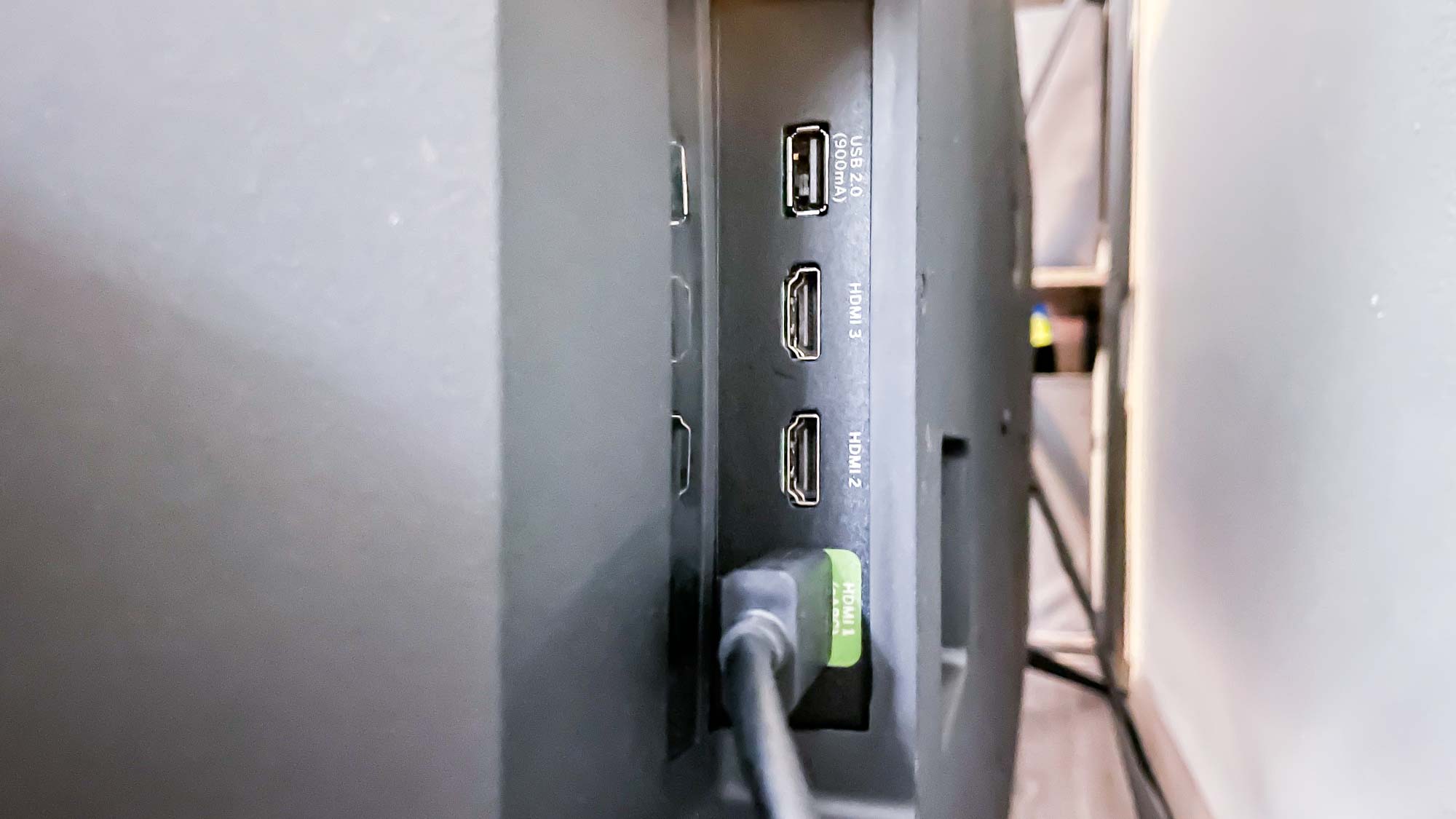
The TV also has a composite video input for older equipment, along with a coaxial TV tuner and USB port. You can connect to your network via Wi-fi or wired Ethernet.
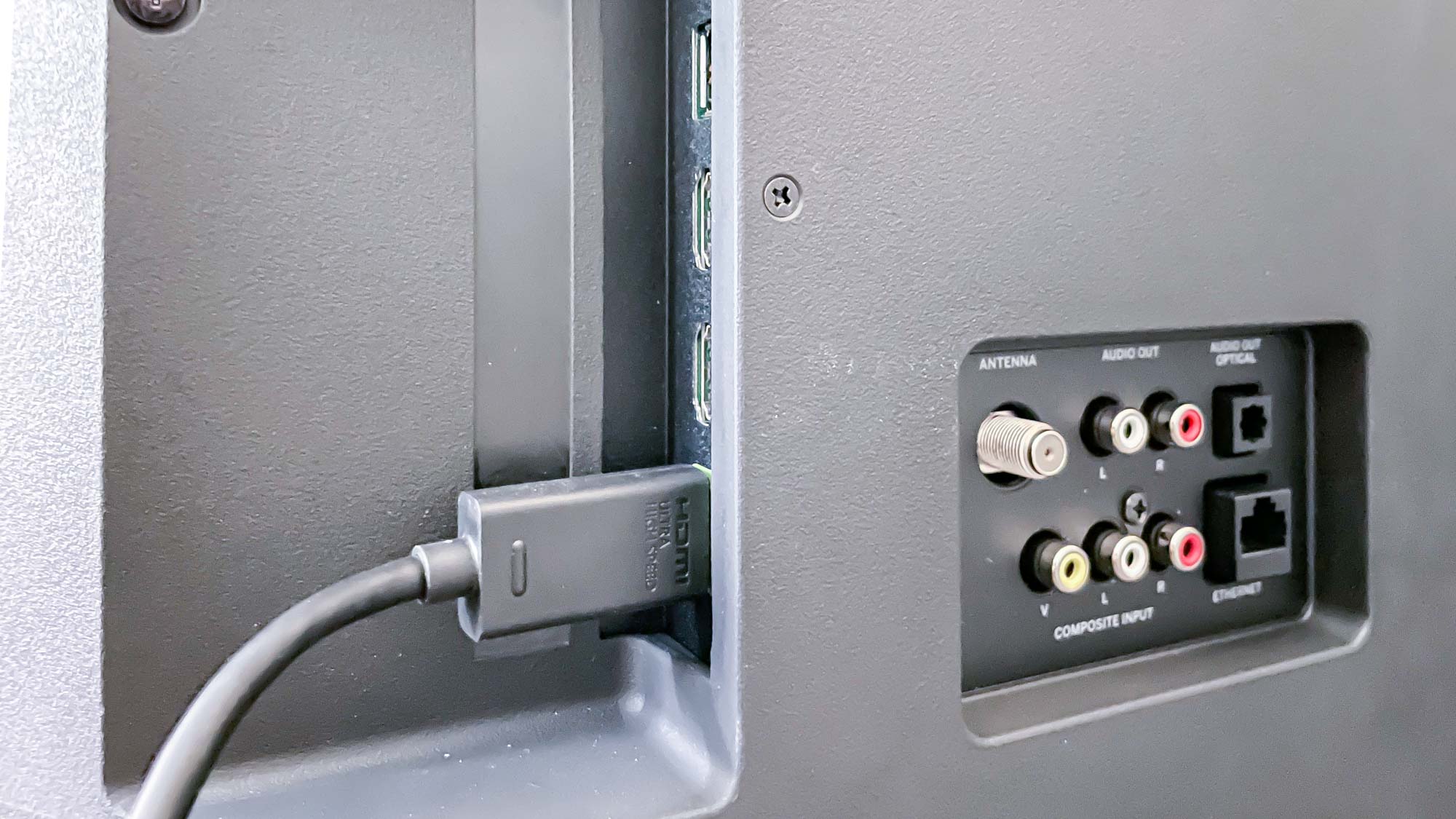
On the back of the TV, there is an optical digital audio output and stereo analog audio output. The V-Series also supports Bluetooth, along with Chromecast and AirPlay 2.
Vizio V-Series (2021 Model) review: Performance
When you’re watching something on the V-Series, you will neither be awed nor terribly disappointed. The picture has some flaws, but none that detract too much from the viewing experience. If you’re willing to tweak the picture settings, you should be able to find a happy medium overall.
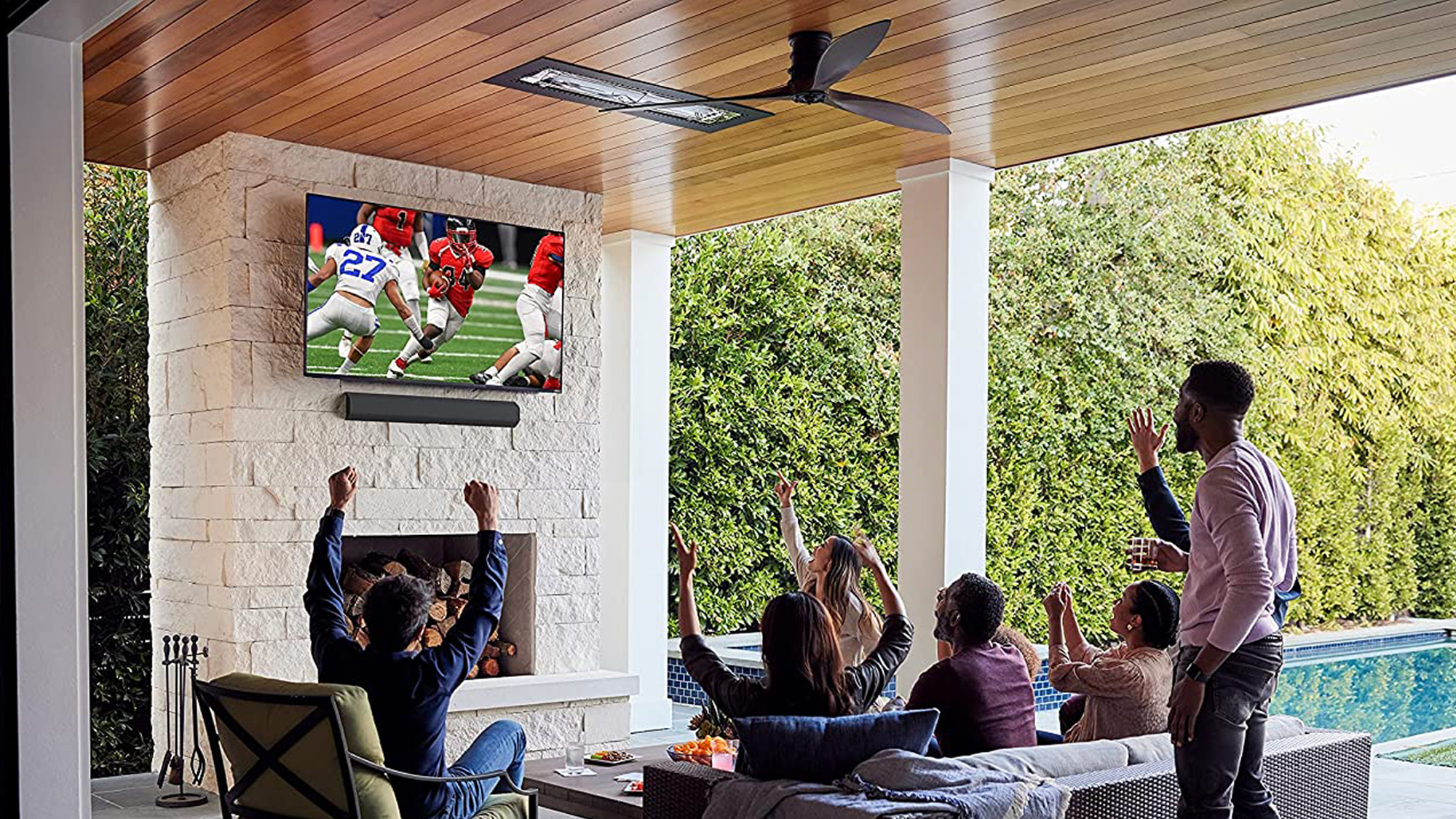
The TV comes with Bright mode set by default. In this setting, some colors can look a little oversaturated. The Squid Game guards’ uniforms were a bit too red, and the fires when the Harkonnens bomb the Atreides in Dune were too yellow. But switching to Calibrated mode made both those colors too muted. The best solution for me was Calibrated with tone mapping increased. You can easily adjust brightness, contrast, color and other settings to achieve the best mix for you — one of the best features of the TV, and not something many value TVs offer.
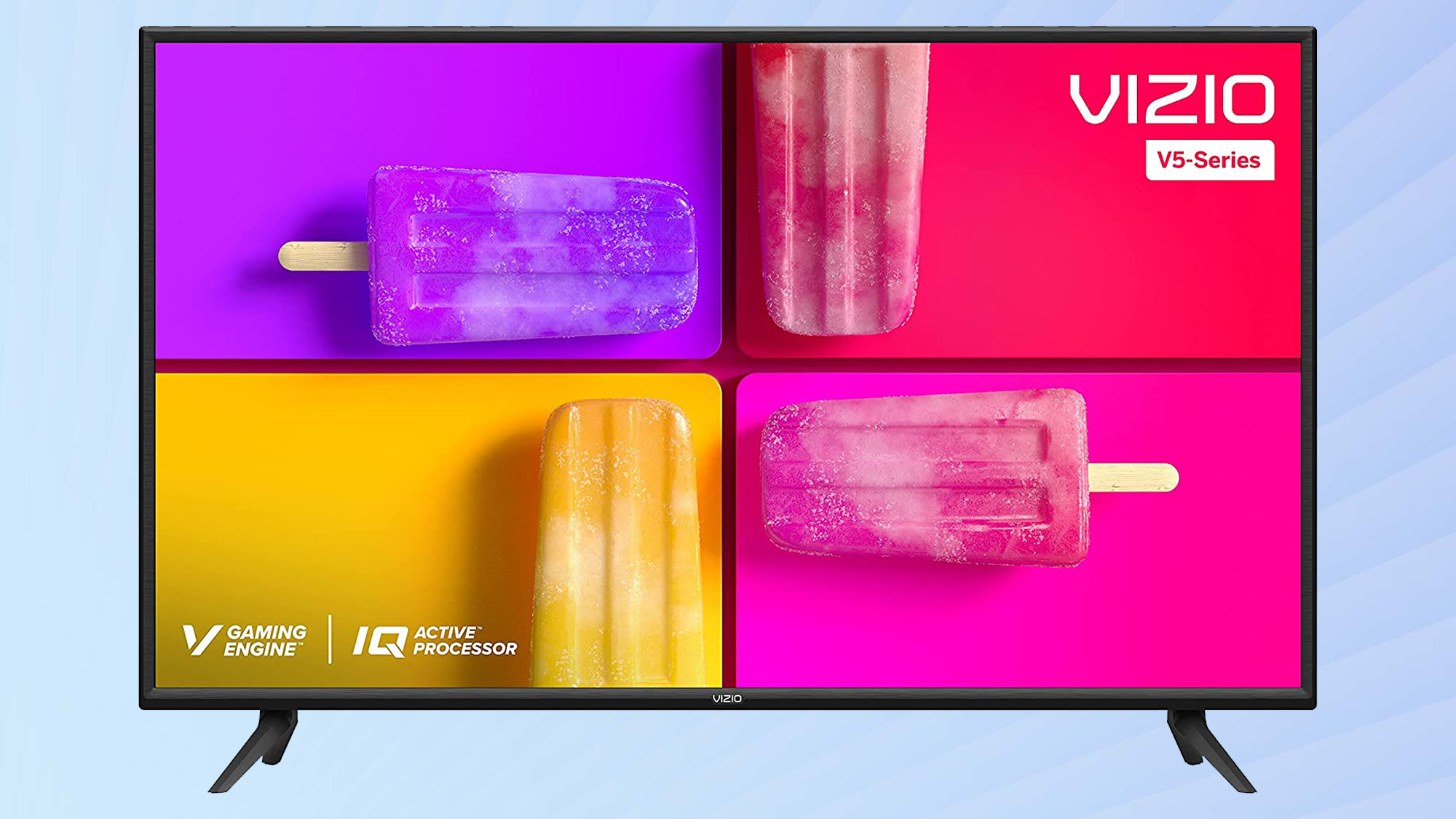
Even with the adjustments, the color seemed a little flat overall and washed out, while images lacked sharpness. For example, when Thor arrives in Wakanda, the lightning coming off Stormbreaker wasn’t as detailed as on a higher end TV, like the Vizio P-Series Quantum (P65Q9-H1).
The V-Series features a full array backlight, but doesn’t have local dimming or quantum dot technology, which you’d find on more expensive TVs. And while the V-Series supports Dolby Vision and HDR10+, I found that details were lost in dark scenes, like when Joe stands in front of the Joi ad in the 4K Blu-ray version of Blade Runner 2049 or the Weathertop scene in the 4K Blu-ray of Fellowship of the Ring.
Vizio V-Series (2021 Model) review: Test results
The poor HDR performance is likely because this V-Series TV doesn’t get very bright. Based on our lab tests, the unit managed a max brightness of 243.4 nits. That’s far below the Hisense U7G Android TV (621.3nits) and TCL 5-Series Roku TV S535 (466.2 nits), and even the Vizio M-Series Quantum MQ6 (299.7 nits).
The V-Series also didn’t score well on color reproduction, which may have caused the overall flat colors I experienced. It produced 97.8 percent of the Rec. 709 color space; all the other TVs we compared it with had at least 99.8 percent.
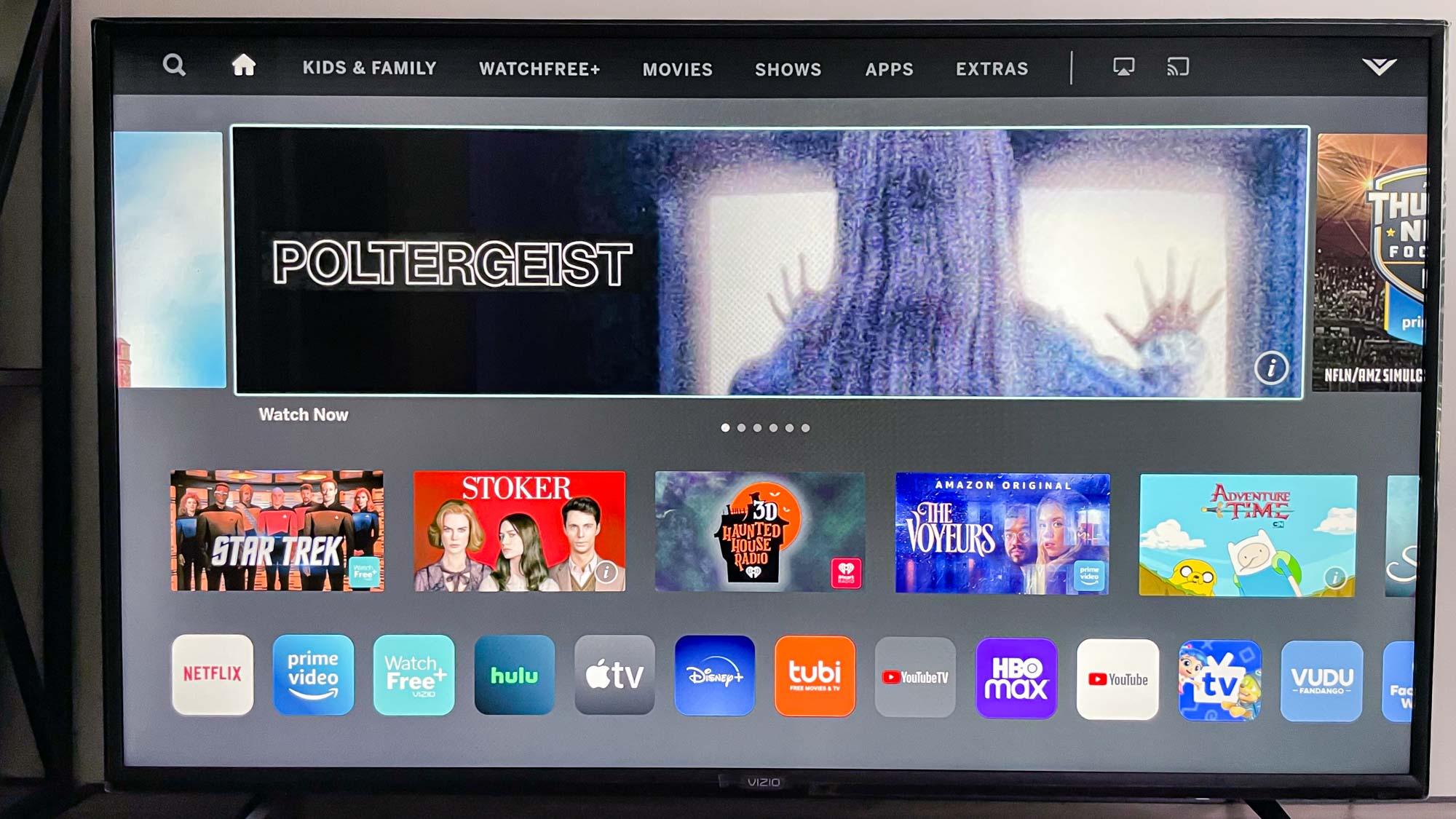
But the V-Series had a Delta-E of 1.46, which measures color accuracy, with lower scores indicating better color accuracy, and 0 indicating a perfect score. That bested the Hisense U7G (1.91) and the Vizio M-Series (1.68). The TCL 5-Series was better by a nose at 1.35.
The V-Series was also impressive when it came to lag, registering 13.7 milliseconds; only the TCL 5-Series was better at 11.8 ms.
Vizio V-Series (2021 Model) review: Gaming
With that low lag time and it’s support for the latest gaming features — VRR and ALLM — we hoped the V-Series would impress while playing games on a Xbox Series X. And for the money, it performs well.
When I launched Forza 4, the TV’s V-Gaming Engine logo appeared, indicating that auto game mode and VRR had engaged. While the V-Series only offers 4K at 60Hz, I didn’t notice any blurring as I raced through the streets. Details in the background were slightly fuzzy, but better than many inexpensive TVs. Colors were more vibrant in Apex Legends than when watching shows and movies. Overall, it was a solid display for gaming.
Vizio V-Series (2021 Model) review: Audio
The V-Series delivers surprisingly big sound for an inexpensive TV. That’s due to support for DTS Virtual:X, which creates a wide soundstage. Voices are fairly clear, though they can get lost in the virtual surround sound mix. You can choose Surround or Stereo sound modes if you don’t find Virtual:X to your liking. While the sound is big, there’s no low-end behind it — if you like the floor to rumble with your special effects, add a soundbar. It’s also worth noting that the V-Series doesn’t support Dolby Atmos, which may limit you if you have a soundbar that can play the surround sound technology.
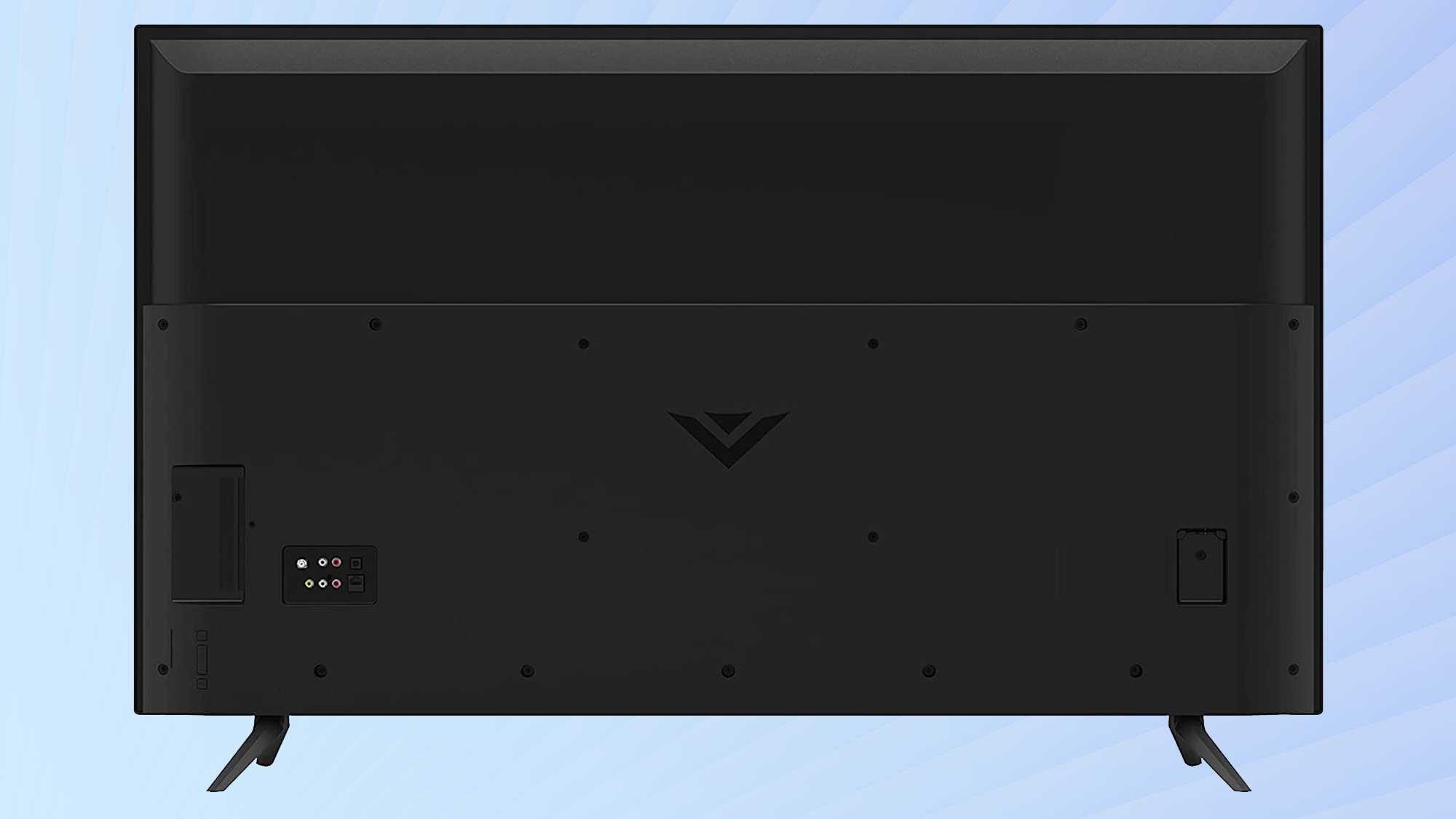
The 10-watt speakers will get loud enough for most rooms — it measured about 85 decibels at max volume — though if you like to listen loud, you’d benefit from adding one of the best soundbars to your home theater.
Vizio V-Series (2021 Model) review: Smart features
Vizio’s SmartCast operating system has come a long way over the past few years and it's getting closer to catching up with Roku, Fire TV and Google TV. The implementation of SmartCast on the V-Series is a little slow, though. You have to wait a moment or two after switching menu items for anything to appear on screen. Apps also take a few seconds to load.
SmartCast is organized similar to FireTV or Google TV. You can scroll down the long Home screen, browsing suggested shows and movies. You can’t edit the Home screen except to reorder this list of apps. The interface also has menu items for Kids & Family, WatchFree+, Movies, Shows, Apps and Extras. Vizio emphasizes free content — whether on the Home screen or the WatchFree+ tab.
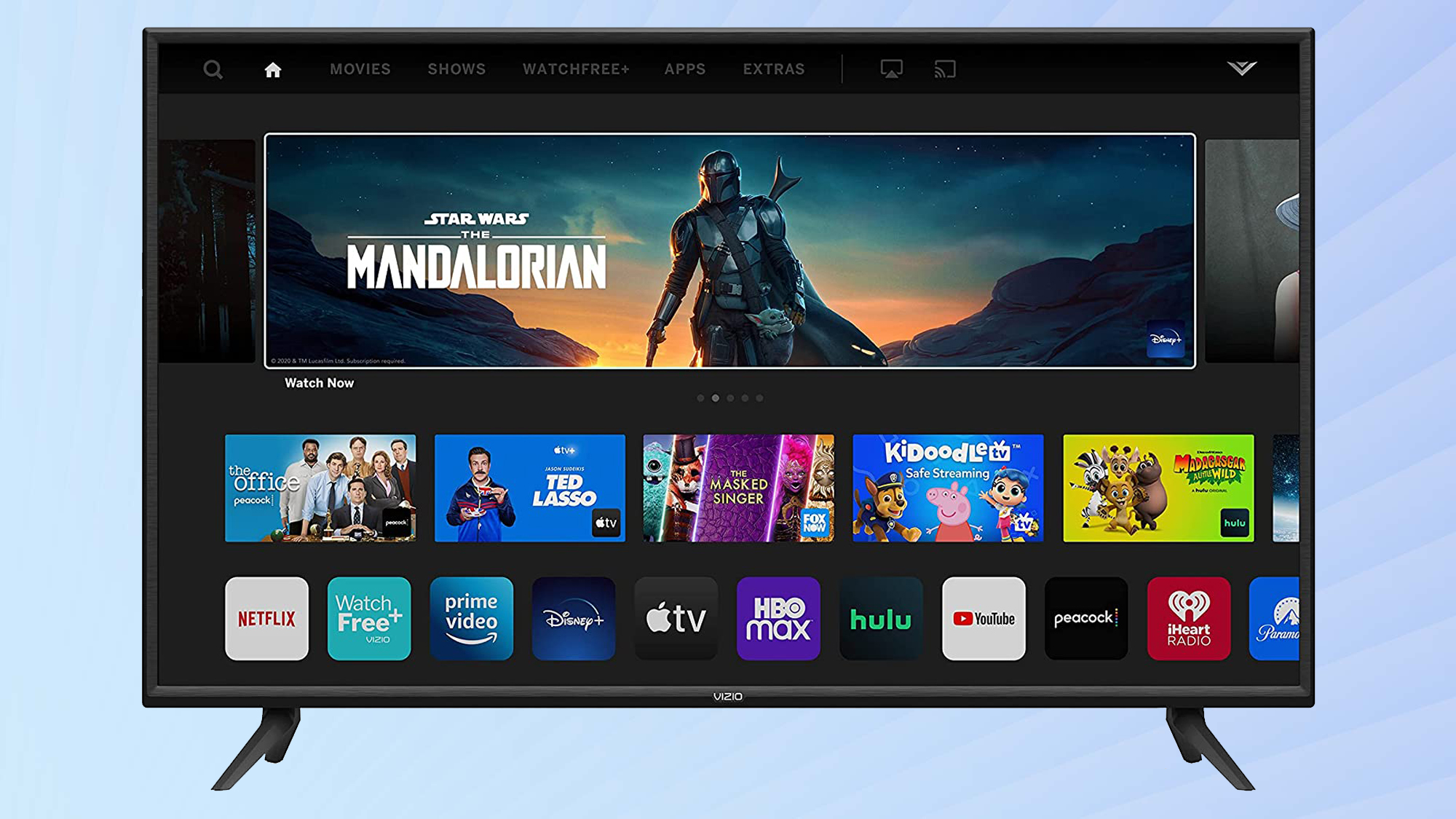
SmartCast has almost every major app you want — beyond the usual Netflix, Amazon Prime Video and Hulu, SmartCast also has Paramount+, Disney+, HBOMax and more. However, I couldn’t find ESPN+, FubuTV or MLB.tv, which may concern sports fans. For apps that aren’t included, you can use AirPlay 2 or Chomecast to send the content from your phone to the big screen. Finding apps can be a challenge, since you can’t search the App tab, but you can use the voice assistant to make it easier.

Vizio introduced its own voice assistant this year, and it does a pretty good job — most of the time. You use the microphone on the remote to activate it. The voice assistant can launch apps, find shows and movies and control the TV. When you search for a show or movie, it shows you the services that it is available on and how much it costs — similar to Roku. It usually understood what I was asking for, although a few times nothing happened when I pushed the button and said my request.
The voice assistant doesn’t connect with any smart home devices, but the V-Series can tie into your existing smart speaker system, whether it’s an Amazon Alexa, Google Assistant or Apple HomeKit compatible unit.
Vizio V-Series (2021 Model) review: Remote control
The remote control that comes with the V-Series is streamlined. It has a scroll wheel in the middle that you use for navigation and an OK button that you use to select items. The scroll wheel also acts to forward and rewind content in apps, and the OK button can play or pause content. Above the scroll wheel are buttons for Home, WatchFree+ and Settings. Below the wheel are the Back, Voice Control and caption buttons. A large volume control and mute button take up the bottom portion of the remote.
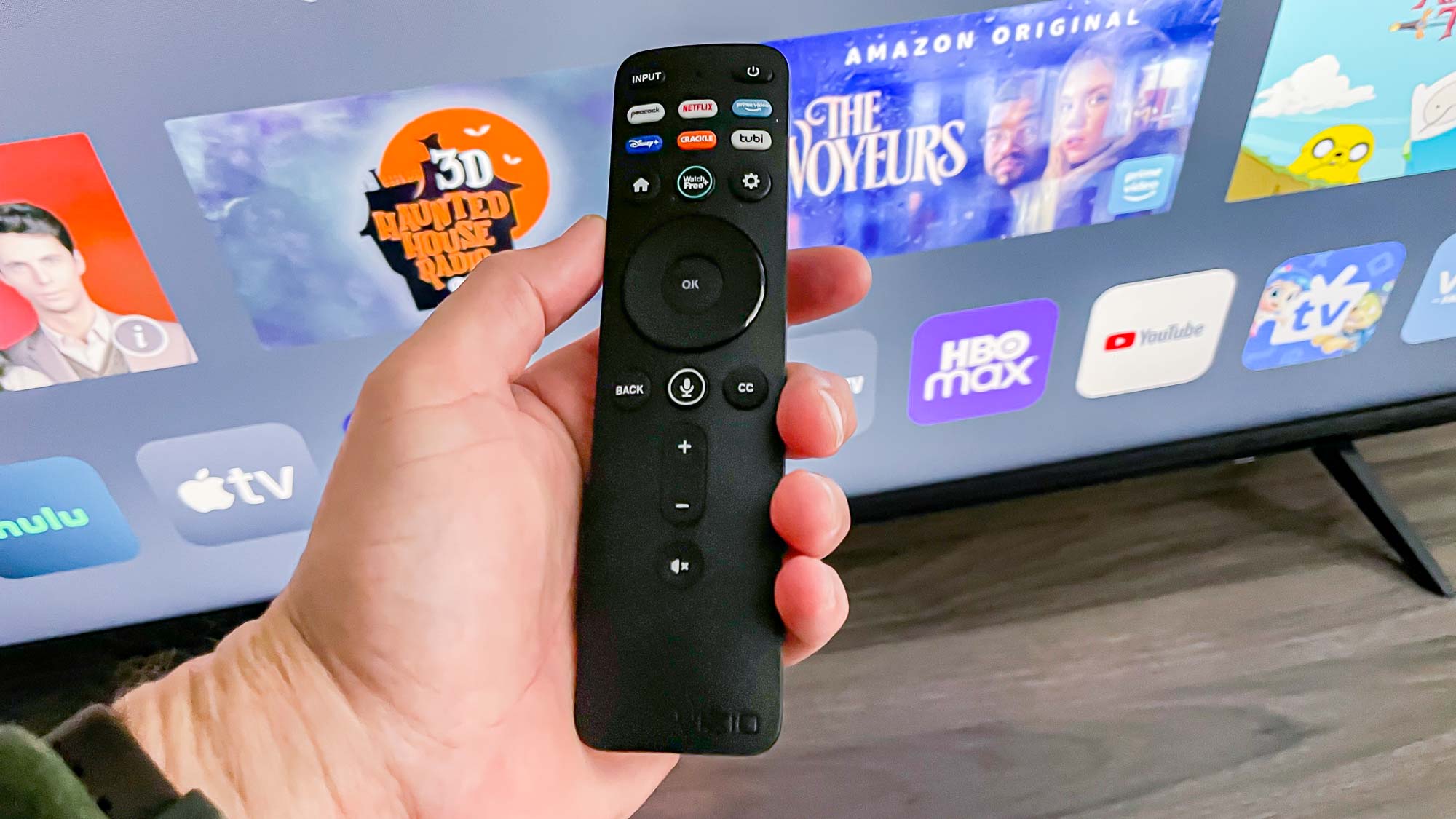
At the top are buttons for power and switching inputs. There are also six quick launch buttons, for Peacock, Netflix, Prime Video, Disney+, Crackle and Tubi. Coupled with the WatchFree+ button, Vizio again shows its emphasis on free content.
Vizio V-Series (2021 Model) review: Verdict
You get a lot for your money with the Vizio V-Series. For less than $500, you get a 55-inch TV with built-in apps and some of the latest tech. What you don’t get is a crisp, perfect picture and the interface is a little slow.
But few TVs in this price range are going to be better. The Toshiba C350 Fire TV is a little less expensive and offers Fire TV — a more mature smart OS — but it’s picture quality is about the same as the V-Series and it lacks HDMI 2.1.
To get a better picture and performance, you’ll need to spend more. The Hisense U7G Android TV is very bright and responsive, but costs $200 more. The TCL 5-Series Roku TV (S535) has better color, but will run about $100 extra.
If you’re looking for a balance of features and performance and have a budget that demands one of the best TVs under $500, the Vizio V-Series could be the right value for you.

Michael Gowan is a freelance technology journalist covering soundbars, TVs, and wireless speakers of all kinds of shapes and sizes for Tom’s Guide. He has written hundreds of product reviews, focusing on sound quality and value to help shoppers make informed buying decisions. Micheal has written about music and consumer technology for more than 25 years. His work has appeared in publications including CNN, Wired, Men’s Journal, PC World and Macworld. When Michael’s not reviewing speakers, he’s probably listening to one anyway.

